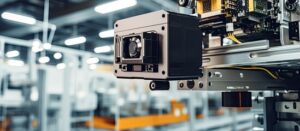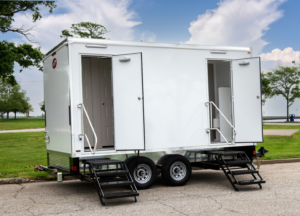Vision systems use sophisticated camera and sensor technology to replicate and enhance human visual capabilities. They provide a rich source of visual data, helping manufacturers identify trends and patterns and detect anomalies in real time.
Embedding Vision Detection Systems in smart manufacturing helps mitigate the risks associated with physical labor and equipment operation. They also enable companies to automate processes and improve quality control.

Cost
Machine vision sensors are used in assembly applications to verify product quality, a process that is difficult to do manually. They detect defective components, print errors, and other flaws in product packaging. They also help manufacturers meet safety and regulatory requirements. According to research, vision systems can reduce human error by up to 12% and improve productivity by up to 10%. This can lead to lower operating costs, reduced downtime and scrap rates, and improved labor efficiency.
The cost of integrating vision detection systems in smart manufacturing can vary widely, depending on the application and the capabilities required. In general, they require significant initial investment to ensure compatibility and optimal performance within the existing workflow. The key is to select the right hardware and software. According to research, the best vision systems include core capabilities such as pattern matching, feature finding, barcode/2D, and OCR, as well as communication with complementary equipment using standard factory protocols. They can also help optimize performance and reduce energy consumption.
Another factor to consider is the number of frames per second (FPS) needed to perform a particular inspection task. High-speed processing demands more memory and computing resources, so it’s important to understand what type of system you need and how much it will cost.
One way to save money on a vision system is to use a controller with GigE or USB3 industrial cameras. For example, the SmartVision controller controls all accessories with a single user interface and makes camera data available over a variety of network interfaces. It can also control multiple cameras at once and has a built-in user interface that simplifies operation.
Besides cost savings, vision systems can provide other benefits, including consistent error-proofing, improved production efficiency, and flexibility, reduced downtime and floor space, and tighter process control. Combined with automated robotics, they can reduce labor costs and improve productivity by up to 50%.
Many industries are implementing computer vision systems to automate the assembly process and increase accuracy. These systems detect defects and ensure the correct components are inserted into products. In addition to this, they can identify unsafe conditions and notify employees of potential hazards. They can also help monitor employee safety by detecting personal protective equipment violations.
Reliability
The reliability of vision detection systems in smart manufacturing is vital to the success of an automated process. These devices can be used to verify a product’s quality, identify errors in production, and detect other anomalies. Unlike manual inspections, which can be dangerous, computer vision systems can monitor machinery and processes without the need for human interaction. This can lead to fewer quality issues, lower rework costs, and faster production.
The accuracy of vision systems depends on the hardware and software components involved. These include the cameras, the lens, and the light source. For example, different lighting conditions can affect the imaging quality and create false positives. The camera also needs to be calibrated to correct for distortion, as well as any mechanical limitations. In addition, a camera must be compatible with the sensor input and output connections.
Machine vision systems typically have complex architectures with industrial or embedded computers tethered to one or more cameras. These systems are programmable with a variety of machine vision libraries and can perform a wide range of tasks, including product counting, execution quality control, and defect detection.
When designing a system, a good place to start is with the requirements document, which describes what the vision system must do. This document is often a collaboration between the end user and the integrator. However, it is important to keep in mind that the requirements document can change throughout the project. This is called scope creep.
Integrating vision detection systems into a smart factory requires careful planning and execution. The first step is to identify the points of waste on the assembly line. This will help you decide which points in the production line to automate. You will then need to determine the best locations for the sensors. You will want to choose the right location for each sensor based on its maximum working distance.
Using smart vision systems in manufacturing offers significant cost savings, improved efficiency, and increased customer satisfaction. It also allows manufacturers to monitor their warehouses, reducing inventory and improving efficiency. In addition, these systems can detect empty containers and optimize restocking. However, there are some risks to implementing these systems, such as the possibility of human error. To minimize these risks, manufacturers should train employees on how to use vision systems effectively.
Scalability
Machine vision systems are powerful tools that use advanced imaging technology to replicate and enhance human visual capabilities in industrial applications. These systems can capture and analyze vast amounts of data more efficiently than humans could, improving quality control and productivity. They also provide a valuable set of metrics for manufacturers to track and analyze, helping them improve and refine production processes.
Traditional vision systems require image processing and integration with higher-level computing systems, increasing the cost of implementation, maintenance, and support. However, advances in smart sensor technologies have made it possible to integrate critical vision detection functions with lower-level hardware and less expensive systems. Smart vision sensors incorporate image analysis and computer vision in a compact, cost-effective form factor that eliminates the need for external light sources or complex computer vision software models.
These intelligent sensors can verify the accuracy of barcodes and other symbology to assist with tracking and tracing. This helps companies implement manufacturing methods to reduce inventory levels and delivery times. It can also help ensure regulatory compliance in the food or pharmaceutical industries.
Embedded vision systems can help to monitor key pieces of equipment for signs of overheating or fire, which can lead to an entire factory shutdown. By monitoring these machines 24 hours a day, these vision systems can detect potential hazards before they can cause a serious problem and notify staff to take action.
These advanced sensors can identify and track issues such as product defects, packaging errors, and misalignment of parts during the assembly process. This allows companies to automate the inspection and verification of products, eliminating human error and improving efficiency. They can even recognize a color that is not within a pre-defined specification and alert the operator to the issue. In addition, they can detect minor safety violations and automatically report them to a supervisor. This can save both time and money for the company and prevent accidents or injuries. These systems can also be used to create reports and dashboards for monitoring and tracking production processes. They can also be integrated with other automation systems to make them more versatile.
Integration
Manufacturing is a high-pressure environment that requires precise and detailed inspection. However, manual inspection is time-consuming and labor-intensive. A vision system with advanced sensor technology can reduce the risk of human error and ensure quality control throughout the production process. This can lead to reduced production costs and improved customer satisfaction. In addition, it can help manufacturers improve productivity by reducing waste and minimizing downtime.
Machine vision is an emerging field of technology that uses cameras and image processing to automate industrial processes. It can perform critical measurements down to fractions of a millimeter, which is more accurate than the human eye. These systems can also identify defects and flaws, and communicate them to robots for immediate action. This allows manufacturers to make a quick decision about the product and take action accordingly.
The components of a vision system include the camera, capture board, frame grabber, and processor. The camera uses a lens to capture images, which are then processed by the system’s software and hardware. The image sensors convert the light into digital signals using either complementary metal-oxide semiconductor or charge-coupled device technology. The captured information is then stored in a memory. The processing system consists of the software and algorithms that execute inspection programs.
Integrated vision systems are used across many industries for quality assurance and defect detection. They can be used to detect a wide variety of defects and anomalies in products, such as discoloration, misshaping, foreign objects, missing labels, or other flaws. These systems can then automatically remove the faulty products from the production line.
Vision systems can also be used to check the accuracy of machine alignments, reducing manufacturing errors. They can also verify barcodes and QR codes to track and manage inventory. They can even monitor and detect corrosion in machinery, enabling predictive maintenance.
While implementing vision systems can be expensive, the cost is quickly recouped through increased production efficiency and reduction of scrap. These systems can also be connected to the Internet of Things (IoT), allowing them to communicate with other devices on the factory floor. This will allow for greater scalability and better integration with the broader network.






